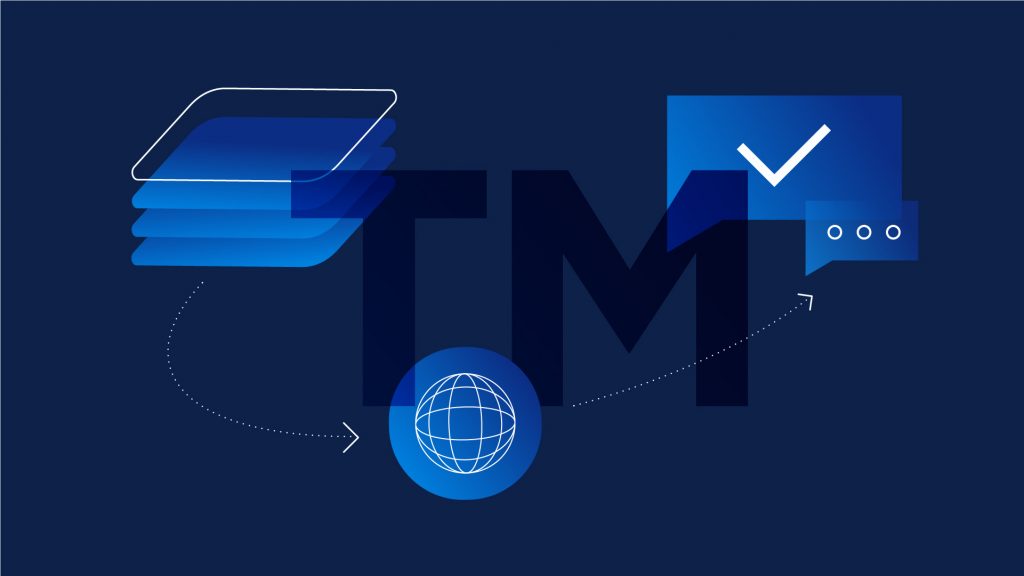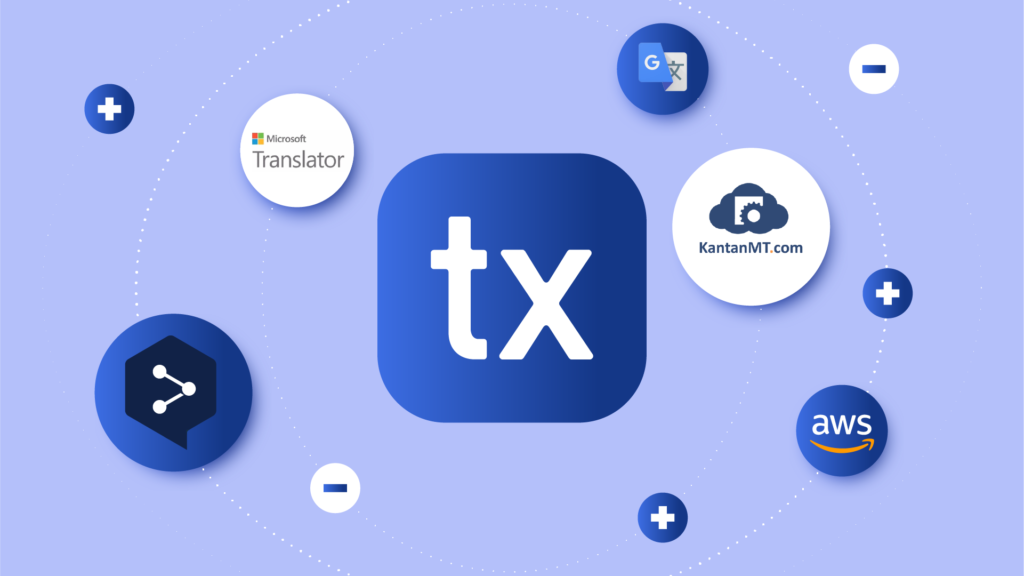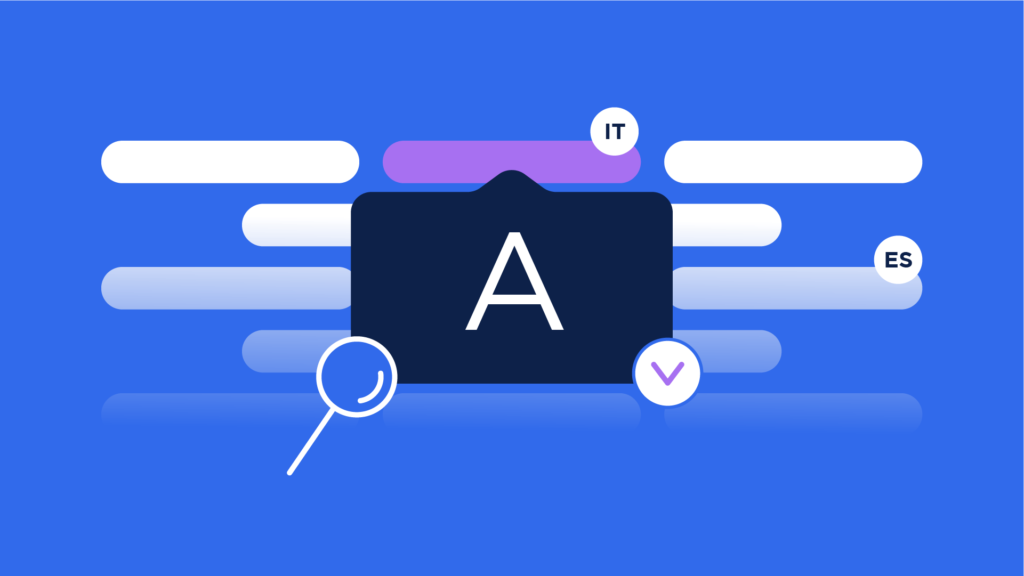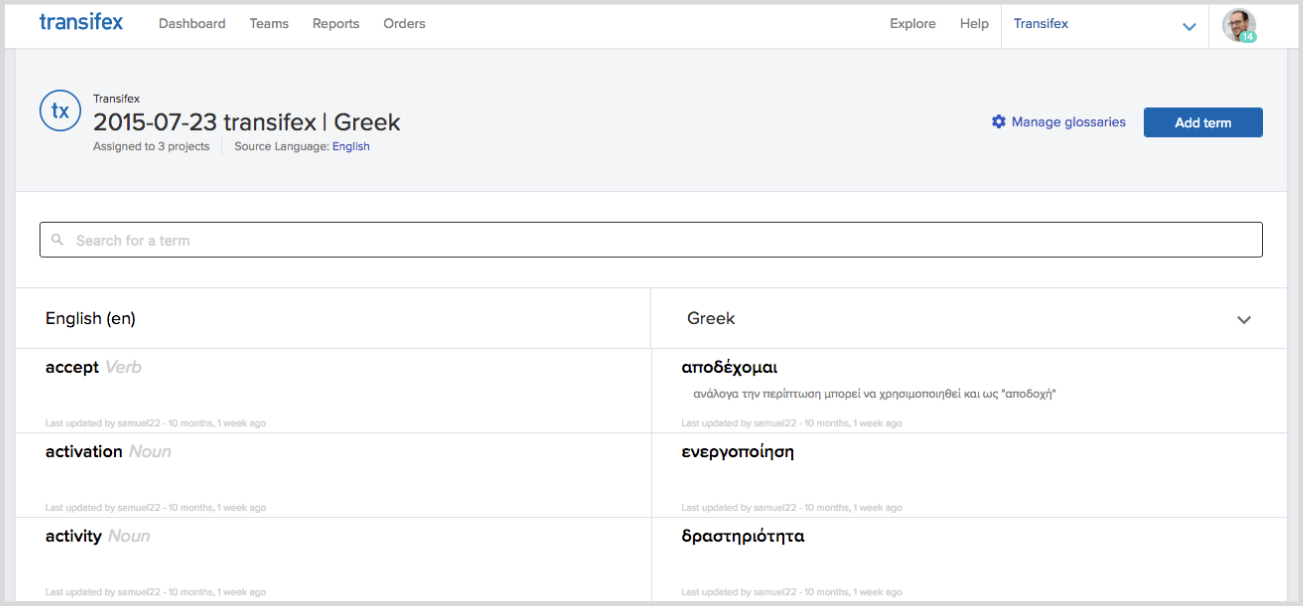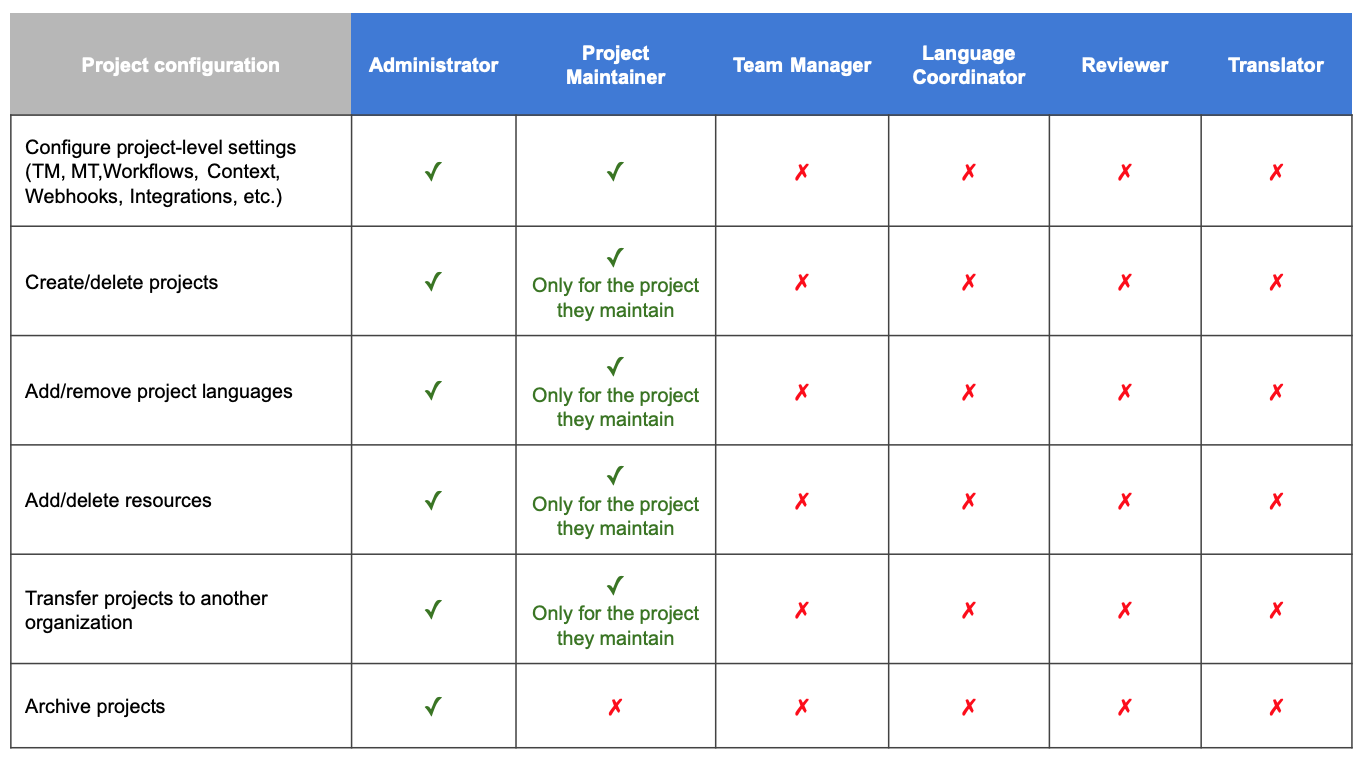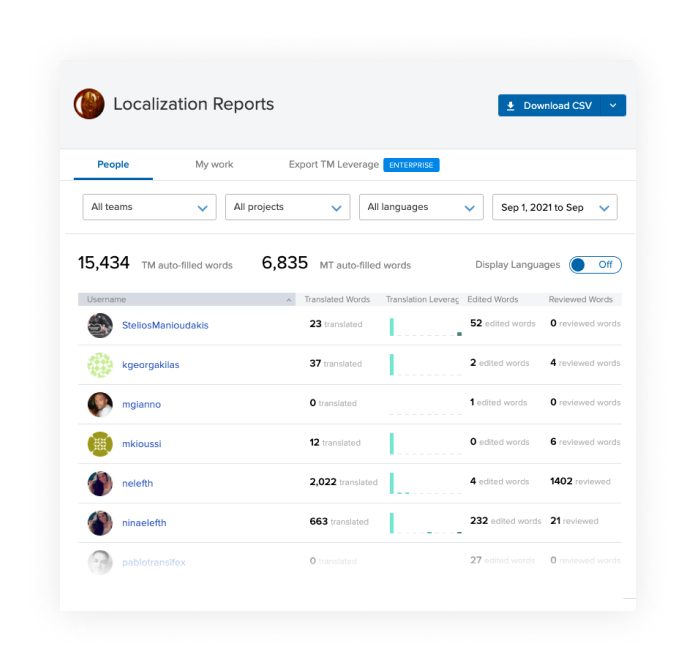
Top 10 localization tools for localization managers
- What are Localization Tools?
- What are App Localization Tools?
- 1: Translation/Content Management System
- 2: Translation Memory
- 3: Machine Translation
- 4: Quality Assurance Tools
- 5: Glossary
- 6: File Management
- 7: Fileless Localization SDK
- 8: User Management
- 9: Analytics/Performance Reports
- 10: Integrations
- Wrapping Up
Moving through the localization process without any help from software quickly becomes an increasingly difficult task. That’s where localization tools come in to make your global expansion mission easier and more successful.
You can use them to localize faster and more efficiently, all while making your life easier and cutting down on expenses.
What are Localization Tools?
Localization tools are pieces of software that you can use to translate and/or localize something. That could be anything from documents to apps or websites.
But it’s not just about getting the job done. It’s also about making it easier, faster, more efficient, while also empowering you to be better at what you do, regardless of your role.
Of course, this is a very vast generalization, as there are plenty of different tools to help different kinds of professionals, from translators to managers and developers.
That is why every company needs either a combination of tools to help its team flourish or a localization and content management platform that offers everything in one package, which is arguably the ideal solution.
What are App Localization Tools?
App localization tools are essentially still just localization tools with the main difference that some of them are specifically useful if you are localizing an app.
Fileless plugins, for example, are only available for apps. But other pieces of software that are also considered app localization tools, such as Translation Management Systems, can be useful for pretty much anything you want to localize.
That could be anything from an app to a website or even a document.
1: Translation/Content Management System
Before translation software came in, translators and managers used to keep track of translations and strings manually. And you can do that via documents, spreadsheets, or any custom solution you can come up with.
If you’ve previously worked that way, you know that this is a challenging workflow. Even something as simple as keeping track of what needs to be translated and what is already completed becomes a challenge; especially if you are dealing with large projects.
Modern Translation Management Systems help you solve that challenge by providing various solutions in one package. Solutions such as:
- Built-in team collaboration tools
- Automatic push & pull requests
- Dedicated room for comments and context or visual context
And much more. In fact, all of the localization tools that we are about to mention in this guide come with Transifex.
In older days, these were mostly found in Computer Assisted Translation software (CAT).
But, nowadays, Translation Management Systems can act both as a CAT as well as for translation management and content management, in general.
2: Translation Memory
Having to translate an identical word/phrase time and time again is a waste of time for everyone involved. And the larger a project is, the higher your odds of having to do this.
Translation Memory addresses this by detecting if a completed translation is identical to another translation that you have to do. After that, you get either a suggestion to automatically fill up that translation, or you let the Translation Memory automatically fill up identical translations, without you having to lift a finger.
Both options are viable depending on what you are localizing and how you are using Translation Memory.
So, in short, TM is a localization tool that automatically completes identical translations for you. Emphasis on “Identical”. Unlike Machine Translation, TM needs your input from previous translations in order to work.
3: Machine Translation
When we say Machine translation, we are referring to tools such as Google Translate, DeepL, etc.
We know what you are thinking. Localization tools such as these are not good enough to replace translators, which is true. But that’s not their purpose in the first place!
Machine translation is meant to be the first draft. You get something to work with, which is better than nothing.
If you have thousands of strings to translate, even if machine translation can only translate 1% correctly, which is an understatement, you get more than a hundred translations done automatically with the press of a button!
So, in the long run, MTs can save a ton of time and energy. Especially on bigger projects.
4: Quality Assurance Tools
Even the best translators make mistakes. We are all human, which is why quality assurance is a must in translation and localization projects.
Before localization tools, you had no choice but to manually check each and every translation to ensure that it was okay to go.
Thankfully, we now have a plethora of software that falls under this category to automate this process and help us fish out even more mistakes. We are talking about software such as:
- Custom Translation Checks
- Lexi QA
- Tags
- Comments under translations
- Visual context (More on that later)
- Character limits
And more features that you can find within Transifex.
Out of all the quality assurance tools, if we had to pick one as the most important, that would be the option to leave comments/context for everything that needs to be translated.
Context is of the utmost importance in translation, and even more so in localization. Experts need to know what they are dealing with.
This is due to the fact that in most languages, a single word can have multiple meanings. Take something as simple as the Greek “Hi”, for example.
Depending on where that word is used, the translation may be a completely different result. That is due to the fact that unlike in English, where “Hi” is only a greeting, the Greek one, “Geia”, can also be used as a gesture of parting.
This means that if the translator doesn’t know the context in which the word is used, no matter how good and experienced they may be, there is a good chance that they’ll get the translation wrong.
5: Glossary
A single language often has multiple terms that you can use to describe the same situation. The tone of voice is important depending on the locale and/or the industry that you are localizing for.
Translators need to know about this information before getting on with their work. So, the question is: What’s the most efficient way to let them know about it?
Ideally, you want translators to have everything they’ll need in a single place. That’s where glossary as software comes in!
In Transifex, glossaries are integrated with the “Custom Translation Checks” QA tool. This means that if a translator doesn’t follow the glossary as they should, they’ll either get a warning stating that their translation doesn’t follow glossary guidelines, or you can even set it so that they won’t be able to save the translation until it’s done right.
Thus, a properly set-up glossary in combination with a translation management system can save you tons of effort and time while making collaboration easier for the whole team.
6: File Management
With great global expansion, comes great content management responsibility. Every localization expert needs a solution for localization-related files, be it source and translated string exports or images, video subtitles, etc.
Most people rely on cloud platforms such as Google Drive. This works great for most types of files and for keeping valuable content safe.
However, downloading, uploading, and, most importantly, editing files that contain strings, is a task that’s going to get more and more complicated as your product expands.
That’s another great use of translation management software. That’s because some translation software tools, such as Transifex, are not simply for managing translations. They also effectively act as a content management solution for your localization needs.
The whole uploading/downloading process still remains, but locating files, editing them, and managing them, in general, becomes much easier with a centralized content management hub.
That is unless you use a fileless solution, such as Transifex Native. More about that below.
7: Fileless Localization SDK
File management in localization has long been a tedious task. Not only for those who manage the files and strings, but also for developers who need to apply any changes.
One relatively new solution to that is fileless tools, such as Transifex Native.
Unlike what the name suggests, fileless doesn’t exactly mean that you won’t have any files whatsoever. You’ll still need to upload the file that contains the strings.
But what it essentially accomplishes is that it eliminates the need for having to constantly download and upload files between the Translation Management Software and your product.
Furthermore, it also eliminates the need for development involvement in the long run.
The way you accomplish that is by inserting an SDK into your code stack. That piece of code allows your product to seamlessly sync with the translation management software, which means that any changes or translations you make will automatically be transferred to your application or website.
Thus, at the end of the day, you reach a workflow where all you have to do is manage the translations, without having to worry about file management and developers.
8: User Management
To localize a website or application isn’t just to manage files and translate or localize. Localization requires you to manage people as well. That could be translators, reviewers, developers, coordinators, or project maintainers.
Slack is obviously one of the first tools that comes to mind for most of us. And while it gets the communication part done right, it doesn’t offer a lot when it comes to separating people by roles. You need something else to make that job easier.
Stand-alone user management tools for localization are not easy to find. So, you may want to once again opt for a localization management tool, instead, as they have built-in user management.
One of the most important reasons to have built-in user management with roles and permissions is due to the fact that you don’t want everyone to be able to manage projects and finalize translations. Each role has its own part to adhere to.
9: Analytics/Performance Reports
Ideally, everyone wants to have a good image of where you stand in terms of progress, especially administrators, project maintainers, and reviewers.
Doing that manually with something like sheets can be an incredibly challenging task. That’s why a software that automates this is an incredibly useful thing to have.
Transifex, for example, comes with built-in performance reports and monitoring tools that you can use to always have an accurate understanding of where you stand.
10: Integrations
Nowadays, most of us use a plethora of tools to get the job done. There are different tools for communication, project management, etc.
So, when you are in need of a localization tool, you ideally want it to seamlessly work with most of the programs you have in your arsenal.
For example, say that you have Transifex for translating your content and Slack for communication. In that case, you can use the Transifex + Slack integration so that reviewers will automatically be notified inside Slack when a translation is ready to be reviewed.
If the localization tool of your choice doesn’t offer a native integration with the software you use, you can also check out Zapier.
Zapier gives you the option to automate numerous actions between two or more apps. So, that’s one way to create integrations that are not natively available for the software of your choice.
Wrapping Up
These are our top 10 localization tool picks. To summarize:
- Translation/Content Management System: A TMS is one of the most basic tools for storing and managing your translations.
- Translation Memory: Tired of having to translate the same word/sentence? Then keep an eye on Translation Memory.
- Machine Translation: MT tools such as Google Translate completely automate translations. They are not as good as translators, but they are good as a starting point.
- QA Tools: Quality Assurance is a must in localization. While there are plenty of QA tools, the option to review translations under a TMS and “Context” are two to definitely look out for.
- Glossary: As a localization tool, the glossary holds all of the common terms that you use from one language to another.
- File Management: A file management solution usually goes hand to hand with a TMS. Nowadays, it’s getting harder and harder to tell the difference between the two in terms of localization.
- Fileless Localization SDK: A fileless solution enables you to perform updates Over The Air, which is great for both localization managers as well as developers.
- User Management: With so many different kinds of people to work with, managing them purely with communication tools becomes a challenge. The solution to that is user management tools for localization.
- Analytics/Performance Reports: As the popular quote goes, “You can’t improve what you don’t measure.” and this applies to localization as well. So, a localization tool that measures your performance is a must.
- Integrations: It’s good practice to make sure that your localization tools work well with other services. And when they don’t, something like Zapier may be worth keeping an eye on.
Related posts
Translation Management System: What it is and what are its benefits
App Localization Tools That you Must Have in your Stack



